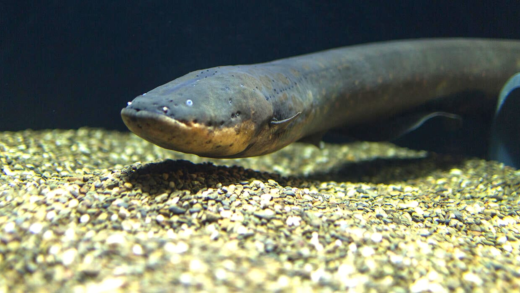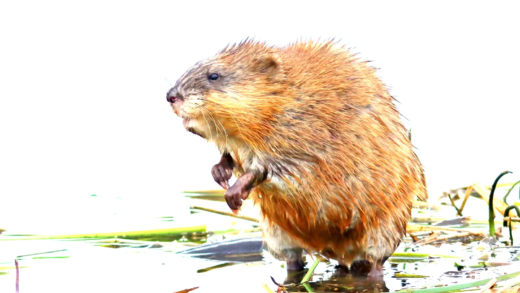Wholphins are a rare hybrid of bottlenose dolphins and false killer whales, facing numerous challenges in the wild including habitat loss, limited genetic diversity, and human interaction. Their rarity is due to restricted breeding opportunities and hybridization barriers, making them significant for conservation studies.
What is a Wholphin?
A wholphin is a fascinating hybrid between a dolphin and a whale, specifically a crossbreed between a bottlenose dolphin and a false killer whale. This unique combination results in a creature that possesses characteristics from both parent species, making it a subject of interest in marine biology and conservation. Wholphins exhibit a mix of physical traits, behaviors, and even vocalizations that reflect their lineage.
The significance of the wholphin in the animal kingdom cannot be overstated. As a hybrid, it represents the complexities of genetic variation and adaptation in marine life. Moreover, wholphins can provide insights into the reproductive behaviors and genetic compatibility between species in the ocean. Studying wholphins helps researchers understand the implications of hybridization, particularly in the context of environmental changes and species conservation.
How is a Wholphin Created?
The creation of a wholphin occurs through the mating of a bottlenose dolphin and a false killer whale. This hybridization typically happens in captivity, as these two species have overlapping habitats but do not commonly interbreed in the wild. The mating process involves natural courtship behaviors, which can include a series of vocalizations and physical displays.
Understanding the science behind this intriguing hybrid reveals important aspects of marine reproduction. Dolphins and whales have complex mating rituals, and their successful reproduction relies on several factors, including the right environmental conditions and social structures. The genetic makeup of the wholphin is a blend, resulting in unique traits that may not be present in either parent species. This hybridization raises questions about the viability of such creatures in terms of reproduction and survival.
Parent Species of a Wholphin
The parent species of a wholphin are the bottlenose dolphin (Tursiops truncatus) and the false killer whale (Pseudorca crassidens). Both species are members of the cetacean family, sharing numerous similarities while also exhibiting distinct differences. The bottlenose dolphin is known for its playful behavior and intelligence, while the false killer whale is recognized for its social nature and strong family bonds.
Identifying these parent species helps in understanding the genetic traits that contribute to the wholphin’s characteristics. For instance, the wholphin inherits the streamlined body of the dolphin and the robust build of the whale, leading to its unique physical appearance. Furthermore, studying these parent species provides insight into the ecological roles they play in their respective environments, which is essential for conservation efforts.
Wholphin Reproduction
One of the pressing questions about wholphins is whether they can reproduce. Currently, there have been no confirmed cases of wholphins reproducing in captivity or in the wild. This limitation raises concerns about the long-term viability of wholphins as a species. Their hybrid status may result in genetic incompatibilities that prevent successful mating.
Discovering if wholphins can continue their line is crucial for conservationists. If they cannot reproduce, their existence relies solely on human intervention and breeding programs. This situation highlights the importance of understanding hybrid species in the context of conservation, as it raises critical questions about genetic diversity and the future of such unique creatures.
Physical Characteristics of a Wholphin
A wholphin boasts a unique blend of features derived from its parent species, the bottlenose dolphin and the false killer whale. These hybrids typically exhibit a streamlined body shape, much like dolphins, but with a more robust and muscular build akin to that of a whale. The color palette of a wholphin usually includes shades of gray and blue, often with lighter underbellies. Their dorsal fins can vary in shape and size, reflecting the influence of both parent species.
- Size: Wholphins can grow up to 8 feet long, making them relatively large compared to their dolphin relatives.
- Skin Texture: Their skin is smooth and sleek, which aids in reducing drag while swimming.
- Facial Features: They possess a beak-like snout, similar to dolphins, but with a broader head.
These distinctive characteristics not only make wholphins visually striking but also contribute to their survival in marine environments. Their unique physical traits allow them to adapt to their surroundings, enabling them to thrive in both captivity and the wild.
Wholphin Behavior
The behavior of a wholphin is a fascinating study as it reflects a combination of traits from both parent species. Wholphins are known for their playful nature, similar to bottlenose dolphins, engaging in acrobatics and social interactions with other marine animals. They exhibit strong social bonds and often travel in small groups.
- Vocalizations: Wholphins communicate using a range of sounds, including clicks, whistles, and body language, much like dolphins.
- Feeding Habits: They are opportunistic feeders, preying on fish and squid, utilizing hunting strategies observed in both parent species.
- Playfulness: Their playful antics often include surfacing and leaping out of the water, attracting the attention of observers.
Understanding wholphin behavior provides insights into the social structures and interactions of hybrid species. Their actions can help researchers identify how genetic traits influence behavior and adaptability in changing marine environments.
Notable Wholphin Stories
Wholphins have captured public interest, with several notable stories highlighting their unique existence. One famous wholphin, named Keka, was born in captivity at Sea Life Park in Hawaii. Keka gained attention not only for her hybrid status but also for her charming personality, often engaging with trainers and visitors.
- Training Success: Keka demonstrated remarkable intelligence, quickly learning tricks and commands, showcasing the cognitive abilities inherited from both parent species.
- Conservation Awareness: Wholphins like Keka have played a role in raising awareness about hybrid species and their conservation challenges.
- Research Contributions: Studying Keka and her interactions has provided valuable data on hybrid behavior and genetics.
These stories not only highlight the charm and intelligence of wholphins but also emphasize the importance of understanding hybrids in the context of marine conservation. As we learn more about these creatures, we gain insights that can aid in protecting their natural habitats and the species they represent.
Challenges Wholphins Face in the Wild
A wholphin faces numerous challenges in the wild, primarily due to their hybrid nature. The unique genetics of wholphins complicate their survival in natural habitats. One major challenge is the lack of a clear ecological niche. As hybrids, wholphins may not fully inherit the hunting skills or social structures of either parent species, leading to difficulties in finding food and socializing with other marine animals.
- Habitat Loss: Like many marine species, wholphins are threatened by habitat destruction. Coastal development, pollution, and climate change significantly impact their living environments.
- Limited Genetic Diversity: The hybridization of bottlenose dolphins and false killer whales may result in reduced genetic diversity, making them more vulnerable to diseases.
- Human Interaction: Increased human activity in oceans, including fishing and boating, poses risks to wholphins, as they can become entangled in fishing gear or harmed by boat collisions.
Understanding these challenges is crucial for conservation efforts aimed at protecting wholphins and their habitats. Addressing these threats can help ensure the survival of this rare hybrid species.
Wholphin Rarity
The wholphin is considered a rare phenomenon in the animal kingdom, primarily due to the specific conditions required for its creation. Their rarity stems from a combination of factors:
- Limited Breeding Opportunities: Wholphins are typically born in captivity, as the mating of a bottlenose dolphin and a false killer whale is not commonly observed in the wild.
- Hybridization Barriers: Genetic incompatibilities can hinder successful breeding among hybrids, leading to low population numbers.
- Conservation Status: Their unique status as hybrids makes them important for conservation studies, highlighting the significance of genetic diversity in marine ecosystems.
The rarity of wholphins emphasizes the need for ongoing research and conservation efforts. Protecting their habitats and understanding their behaviors can contribute to the preservation of this fascinating hybrid, ensuring that future generations can appreciate their existence.





Comments are closed.